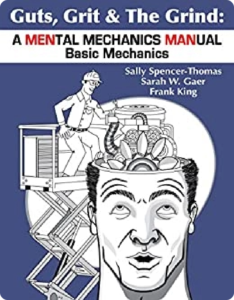Tom had spent decades building his construction company from the ground up. He prided himself on running a tight ship, meeting deadlines, and treating his crew like family. His team was tough, hardworking, and loyal—just like him. Over the years, Tom had read that construction has one of the highest suicide rates of any industry in the United States. He’d even heard speakers at safety conferences talk about the issue, and he’d told himself he should keep an eye out for warning signs. But nothing prepared him for the Monday morning when he got the call: Mike, one of his longest-serving foremen, had died by suicide over the weekend.
The shock hit the jobsite hard. The usual banter and laughter were replaced by silence and sidelong glances. Some crew members tried to keep busy, others couldn’t focus at all. Tom felt lost. He’d always believed in solving problems with action, but this was something he couldn’t fix with tools or grit. Despite knowing the statistics, Tom was stunned that it had happened in his own company. At first, he thought about keeping it quiet, not wanting to upset anyone further or have rumors spreading. But as he watched his crew struggle with confusion, guilt, and grief, Tom realized that silence would only make things worse.
He reached out to a safety consultant who’d spoken at a recent industry event and learned about “postvention”—the steps a company can take after a suicide to help employees heal and prevent further tragedy. Tom knew he had to do something different. He called a meeting with his site supervisors and mapped out a plan.
Acknowledge the Loss Openly and Compassionately
Tom gathered his crew in the break room. He spoke plainly and honestly, sharing the news of Mike’s passing and expressing his own shock and sorrow. He told the team it was okay to feel upset, angry, or confused, and that nobody had to go through it alone. Tom’s willingness to be vulnerable set the tone for the whole company. For the first time, some of the toughest guys on the crew felt permission to talk about their feelings.
Offer Practical Help to the Bereaved
Tom made sure Mike’s family had the support they needed. The company organized meals, covered funeral costs, and gave crew members who were close to Mike time off to grieve. Tom also provided information about local counseling services and made sure everyone knew about the company’s Employee Assistance Program (EAP). By taking care of his people, Tom showed that their well-being mattered more than any deadline.
Bring Mental Health Resources to Employees
Knowing that the pain wouldn’t disappear overnight, Tom brought in a counselor to meet with the crew. The counselor led a group session where workers could share memories, ask questions, and learn about the signs of stress and depression. For many, it was the first time they’d heard that mental health struggles were common—even in construction, where “toughness” is the rule. Tom made it clear that asking for help was a sign of strength, not weakness.
Restore Balance and Honor the Person Who Died
The crew held a memorial for Mike at the jobsite. They shared stories—about Mike’s work ethic, his sense of humor, and the time he stayed late to help a new apprentice finish a tricky job. They set up a memory board in the trailer, where anyone could post notes or photos. Honoring Mike’s life helped the team process their grief and start to heal together.
Train the Team on Postvention and Prevention
Tom realized that responding to tragedy wasn’t enough; he needed to prevent it from happening again. He arranged for suicide prevention and postvention training for all supervisors and crew leads. They learned how to spot warning signs, how to start tough conversations, and what resources were available. The company started talking openly about stress, substance use, and mental health at safety meetings—right alongside hard hats and harnesses.
Key Lessons and Lasting Change
Through these steps, Tom’s company began to heal and grow stronger:
Crew members felt safer talking about mental health.
Conversations that were once taboo became part of the jobsite culture. People checked in on each other more often, and supervisors got better at spotting when someone was struggling.
Stigma decreased, and more people accessed support.
More workers used the EAP, and some shared their own stories of struggle and recovery. The company brought in mental health speakers and kept resources visible in the break rooms and trailers.
The workplace culture shifted toward compassion and resilience.
The team became more connected, and Tom updated company policies to include mental health days and flexible scheduling during tough times. They even started a peer support network so no one had to face hardship alone.
Tom learned that real leadership in construction wasn’t just about building structures—it was about building people up, especially in the hardest times. By embracing postvention, Tom helped his company move from crisis to community, and from silence to hope.
The Takeaway
Tom’s story is a reminder that suicide postvention isn’t just about managing a crisis—it’s about transforming workplace culture. By acknowledging loss, offering support, bringing in resources, and prioritizing ongoing education, leaders can turn tragedy into an opportunity for growth and healing. Tom’s company emerged stronger, more connected, and better equipped to face whatever challenges the future might bring. In choosing compassion, Tom not only honored Mike’s memory but also laid the foundation for a healthier, more resilient crew—on and off the jobsite.
Make a Quick Call

